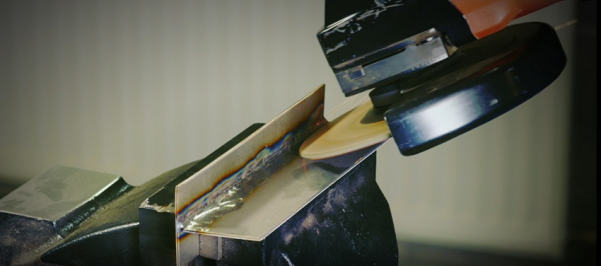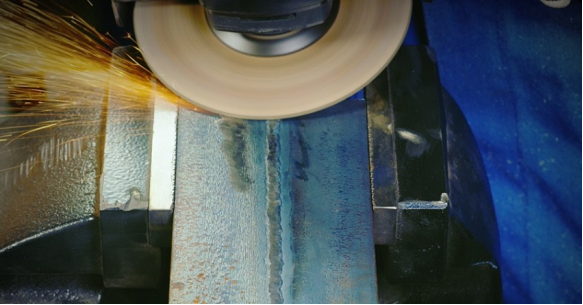Weld seams play a crucial role in joining metal components, imparting strength and structural integrity to various products. However, there are instances when these seams need to be removed for aesthetic or functional reasons. For professionals and DIY enthusiasts alike, understanding how to effectively and safely remove weld seams is a valuable skill. In this comprehensive guide, we will delve into the world of weld seam removal, focusing on the power and versatility of the grinding disc as an essential tool for achieving seamless results.
The Importance of Weld Seam Removal
Weld seams are the visible lines formed when two metal pieces are joined together through welding. Although they serve a vital purpose in welding applications, they can be undesirable in certain situations. For instance, in decorative metalwork or applications requiring a smooth, unmarred surface, weld seams must be removed. Additionally, weld seams with sharp edges may pose safety hazards, making their removal essential in critical applications.
The Versatility of Grinding Discs
Among the various methods of weld seam removal, the grinding disc stands out for its versatility, ease of use, and effectiveness. A grinding disc is an abrasive wheel used with an angle grinder or bench grinder. These discs come in various shapes and sizes, each designed for specific tasks. The most commonly used grinding discs for weld seam removal are depressed center discs and flap discs.
- Depressed Center Grinding Discs
Depressed center grinding discs, also known as grinding wheels, are widely used for weld seam removal due to their aggressive material removal capabilities. They feature a depressed center that allows better access to the workpiece, making them ideal for grinding in tight spaces and corners. These discs are available in different materials and grits, offering various levels of coarseness for different applications.
- Flap Discs
Flap discs, on the other hand, are constructed with overlapping flaps of abrasive material attached to a central hub. These discs are more versatile than traditional grinding wheels as they can provide a smoother finish while still removing weld material effectively. They are available in various grits and are particularly useful for blending welds and surface preparation.
How to Use a Grinding Disc for Weld Seam Removal
Using a grinding disc for weld seam removal requires skill and precision to achieve the desired results. Follow these steps to effectively use a grinding disc:
- Assess the Weld Seam
Begin by examining the weld seam to determine its thickness and any potential obstacles. This assessment will help you choose the appropriate grinding disc and establish the best approach for the removal process.
- Safety Precautions
Before starting, ensure you are equipped with the necessary safety gear, including welding gloves, safety goggles, a face shield, and a respirator to protect against sparks, flying debris, and harmful particles.
- Secure the Workpiece
To avoid accidents and achieve a smooth removal process, securely clamp the workpiece to a stable surface. This prevents unwanted movement that could lead to uneven grinding.
- Select the Grinding Disc
Choose the right grinding disc for the job based on the material, thickness of the weld seam, and the desired finish. Coarser discs are suitable for thicker welds, while finer ones are ideal for finishing touches.
- Mark the Seam
Use a marker or chalk to outline the path of the weld seam, creating a visual guide for your grinding process. This will help you maintain a consistent removal path.
- Grinding Technique
Hold the angle grinder firmly and position the grinding disc at a slight angle to the weld seam. Apply even pressure as you move the disc back and forth along the marked line. Avoid excessive pressure, as it may cause gouging or uneven grinding.
- Check Progress
Periodically pause and inspect the work to ensure you are not grinding too deeply or inconsistently. Continue grinding until the weld seam is nearly removed.
- Finish and Smooth
Once the weld seam is almost gone, switch to a finer grit grinding disc or use a sanding disc to achieve a smoother finish. Gradually blend the surrounding metal to create a seamless surface.
Conclusion
In the realm of weld seam removal, the grinding disc emerges as a powerful tool that combines effectiveness and versatility. Whether you’re a seasoned professional welder or a passionate DIYer, mastering the art of using grinding discs will empower you to achieve seamless and smooth metal surfaces with ease. Remember to prioritize safety, adhere to proper grinding techniques, and select the appropriate grinding disc for each task. With these skills in your arsenal, you can confidently tackle weld seam removal projects with outstanding results.


